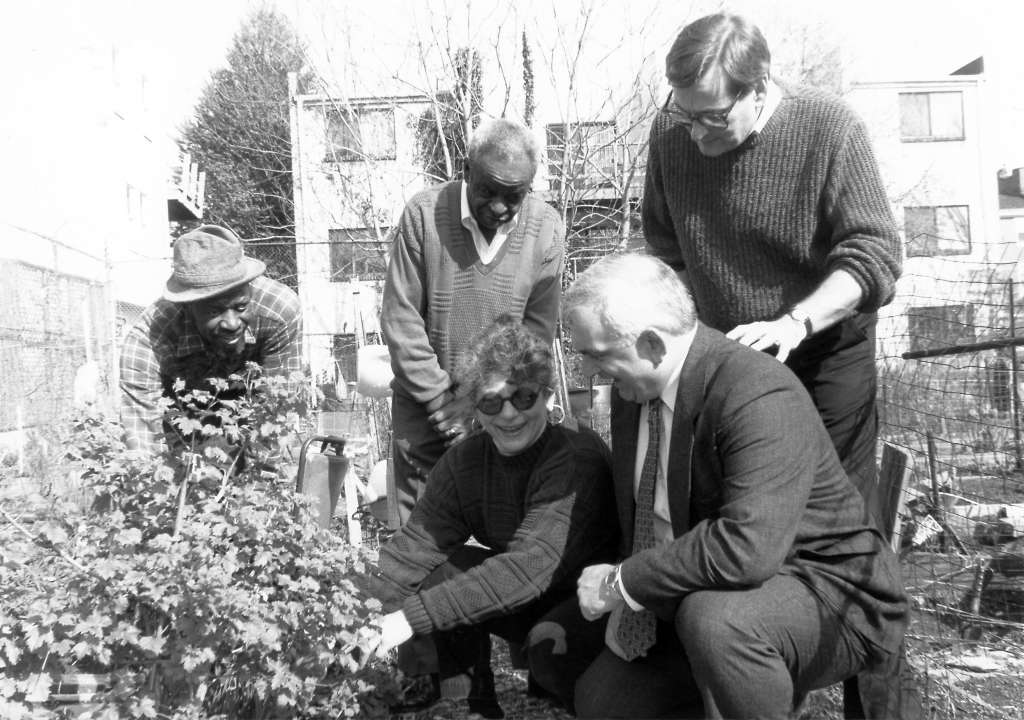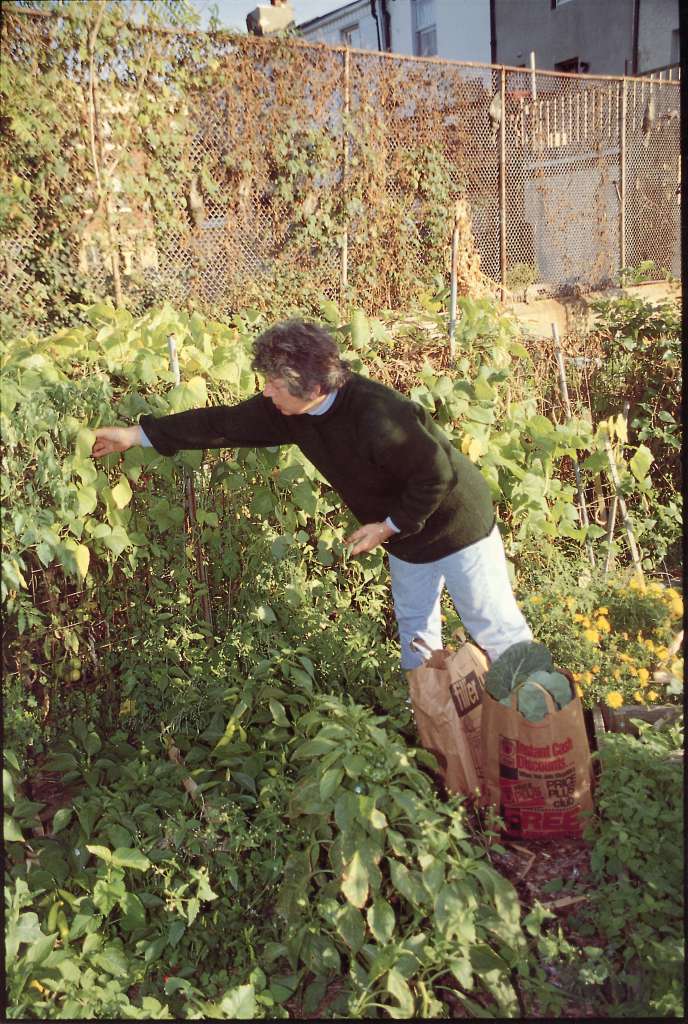Among many losses of 2020, Philadelphia lost Libby Goldstein, a leader in the movement to reclaim vacant land for community gardening, and in the fight to preserve that land for the neighbors who cultivate it. Libby wrote in the late 1970s that, “Land acquisition is ultimately a political act.” She got it. And her passion and hard work seeded community gardens across Philadelphia and led to the establishment of the Neighborhood Gardens Trust.
In her final act, Libby left a bequest to NGT to establish the “Libby J. Goldstein and James A. Brightman Fund,” to support “garden acquisition and/or for the development and maintenance of the Southwark/Queen Village Community Garden”. Thanks to Libby’s commitment and her vision, a significant portion of this bequest will support land acquisition, so that NGT can continue to preserve community gardens across the city facing the threat of development.
In gratitude and celebration of Libby and her co-organizer James Brightman, (known as Shorty by friends and neighbors), Carla Puppin, NGT’s board president and an early gardener at Southwark/Queen Village shares this historical tribute.

Long before Facebook existed, if you wanted to know what was going on in the neighborhood around Fourth and Christian Streets back in the 1970s, you got in touch with James (“Shorty”) Brightman, the local go-to guy. James had grown up in the area and lived on the 300 block of Christian Street. As the local Democratic committeeman, “he knew everyone and their mother,” says Reverend William Green, pastor of Philip Temple Methodist Church on South Third Street. Libby Goldstein, a more recent resident, worked at that time for Philadelphia Housing Authority (PHA) and was a casual gardener. When a nearby small vacant lot became available, Libby organized a few neighbors to garden there. She didn’t stop when that lot was sold and a house built on it; she just moved forward.
1976 was the year of the Bicentennial and the Queen Village Neighbors Association (QVNA) was looking for a way to spruce up the “eyesore” of a huge vacant lot (the former site of the Henry Burk Elementary School) on Christian Street for the expected Bicentennial visitors who would pass on their way to visit historic Old Swede’s Church further down the street. With the backing of QVNA, where Libby chaired the newly formed Garden Committee, she proposed using the lot for a new community garden. Together, Libby and Shorty (with his many contacts) canvassed the neighborhood to sign up additional people interested in gardening on the new site, which could accommodate over 60 plots. Shorty had attended Burk Elementary so the garden site must have especially appealed to him.
Just at this time Libby was hired by the Pennsylvania State University Cooperative Extension Service to set up and run an Urban Gardening Program in Philadelphia. The newly created garden on Christian Street became one of nine Penn State demonstration sites, hosting food production, preservation, and nutrition workshops. Over the next decade, Libby would work with more than 100 community gardens throughout the city. Libby told it best in a 1988 South Philadelphia Review article on the garden. “I needed a place to do more gardening and I ended up building a career out of it.”
The gardeners chose the name “Southwark /Queen Village Community Garden” for the new garden to reflect both the old and new names of the neighborhood. Shorty and Libby were deliberate in making sure that the garden members were an even mixture of old-timers and newcomers. In that same 1988 Review article, Shorty commented that the garden membership was about 50% black and 50% white– “we’ve never had any problems–everyone generally gets along.” Many years later, Libby wrote that the garden was one of the first places that older African American residents worked side by side with the newer immigrants and “young professionals.” Shorty served as Garden Chair for several years stopped only by ill health.
From the start, Libby recognized that finding a way to hold on to the land for gardening was crucial. In late 1979, word was out that a group wanted to acquire the lot for a health center without having solicited any community participation. Ever the savvy organizer, Libby worked with then City Councilman Tom Foglietta, with QVNA and fellow gardeners, and in what was described as “a standing room only” meeting, presented a proposal to the City to acquire the land. Easier said than done. Once the owner went out of business, the land ended up as federal “surplus property.” Libby wrote letter after letter, invited public officials to the annual fall barbecue (rumor was that if they didn’t show up in September, they’d lose in November). The path to preserving the Southwark/Queen Village Community Garden would be complicated, take over ten years, and involve many politicians as well as city, state, and even federal agencies.
Like that prolific zucchini that keeps producing, the idea of saving one garden was only the beginning. In their work to preserve the Southwark/Queen Village Garden, Libby and others realized that what was really needed was a land trust that could acquire and hold land for many community gardens throughout Philadelphia. It was from these early seeds that the Neighborhood Gardens Association/A Philadelphia Land Trust, now the Neighborhood Gardens Trust (NGT) was created in 1986. As for the Southwark/Queen Village Garden, at long last, in 1991 the General Services Administration and the National Park Service deeded the garden to the city for use in perpetuity as a “gardening park,” and the city in turn designated NGT as the long-term lease holder.
Libby would go on to serve as Chair, mentor, gardening go-to person (“Just ask Libby”) for many, many years at that garden, the garden that she and Shorty worked so hard to create.

